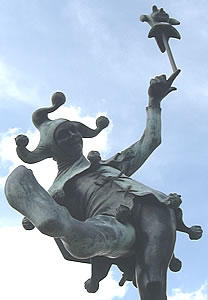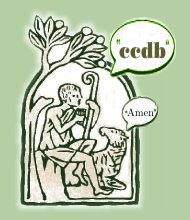The Papacy of Benedict XVI thus far
Sanro Magister has an analysis of Pope Benedict XVI's tenure thus far here. He presents some of the differences in approach that Pope Benedict XVI has taken. Some highlights:
The new pope's style is sober in terms of his contact with the masses. His symbolic expressiveness comes entirely from the liturgy, which he celebrates with a great sense of authority. But apart from the Masses, catecheses, and blessings, Benedict XVI is a minimalist. "The pope must not proclaim his own ideas, but rather constantly bind himself and the Church to obedience to God's Word," he said when taking possession of the Chair of the Bishop of Rome, in the Basilica of St. John Lateran, on May 7. And he keeps to this standard even in regard to public gestures. He does very little of his own. He wants the faithful to pay attention to what is essential, which is not his own person but Jesus Christ alive and present in the sacraments of the Church.I think he makes a fair assessment on how Benedict XVI's papacy differs from John Paul the Great's. That's appropriate, for the Church's needs today differ from the her needs when JPG took the helm in 1978. Catholics, Christians and all others of good will need time to digest the magnificant teaching JPG left us. Meanwhile, Pope Benedict XVI's instruction will certainly extend the insights his predecessor. He will also provide the guidance we all need today.
---------------------------------------
Benedict XVI has already reined in the extraordinary number of saints and blesseds proclaimed by pope Wojtyla. Ratzinger does not proclaim the new blesseds himself, leaving this instead to the appropriate local churches, and he has put the brakes on the proclamation of new saints.
Another cutback regards trips abroad. His will be few and tightly focused. He gave the example with his first trip, to Bari on May 29: he made a round trip in one morning, staying only to celebrate Mass. He will stay a bit longer in Cologne in mid-August. He has planned a visit to the Jewish synagogue, the second such visit by a pope after the historic 1986 visit of John Paul II to the synagogue of Rome. Concern for the relationship between the Church and Judaism is another characteristic feature of the new pope, this in full continuity with his predecessor.
Benedict XVI seems no less decisive in his desire to make peace with the Eastern Orthodox Churches. He shares with them a focus on the centrality of the Eucharistic liturgy and respect for tradition.
His decision to return the naming of candidates for sainthood to local Churches exemplifies this guidance. He already models subsidiarity in a time when centralization is all the rage. He works the collegiality with his brother bishops through acts such as these. He has decided to travel less extensively than JPG. That's necessary as well. JPG modeled the evangelization necessary for the Catholic Church to fulfill Christ's mission in the world. Pope Benedict XVI now models the humility and need to listen to Christ's word proclaimed. The Church needs this to move forward on the mission, too. Our Holiness in Christ is what empowers us to evangelize the world that has rejected him. Without listening to Christ's word in obedience, how can we hope to possess this holiness. Without it, how can we expect to succeed at bringing the gospel to those without it?
Many from the "right" and "left" have complained about his ministry thus far. Mr. Magister mentions the complaints of the ousted America Magazine Editor-In-Chief, Fr. Thomas Reese, S.J. Among other things, Fr. Resse:
has blasted the new pope as an irreconcilable enemy of modernity, inspired by the gloomiest form of Augustinianism imaginable. By way of demonstration, Reese recommended an essay in "Commonweal" by Joseph A. Komonchak, who is a priest of the archdiocese of New York, a professor at the Catholic University of America in Washington, D.C., and one of the leading collaborators with the five-volume "History of Vatican Council II" directed by Giuseppe Alberigo. The most widely read history of the council in the world, this series was recently the object of criticism from Cardinal Camillo Ruini, the pope's vicar.Not surprisingly, those on the "right" can't understand why the new Pontiff hasn't "cleaned house" and tossed the dessenters out on the asses. Neither side grasps the essense of how he sees the papacy. First and foremost, he sees himself just as he said in his introduction, as a "worker in the vineyard of the Lord." Just as the Lord praises unity in his church, so does his worker, Benedict XVI. Secondly, The Pope is well aware that Relativism has ravished civilization. However, schism is not the answer to relativism. He does not seek schism; he seeks unity. His continuation of relations with the Jewish people, radically pioneered by JPG, emphasises this. He also wants to see the union between the Catholic and Orthodox Churches that his predecessor longed to see. He understands that the root of unity is in Christ, and Christ is Truth and Love. Healing takes time, something impatient Catholics beholden to theological ideologies don't want to acknowledge.
I have confidence that even how the Holy Spirit is at work through his Church and his Vicar to ensure the steady course of Christ's body on earth. Pope Benedict XVI has wisely steered the Baroque of Peter in his early months as Supreme Pontiff. I'm sure his strong hand will continue.





















<< Home